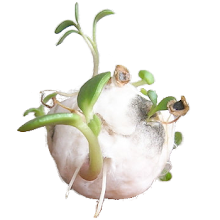http://thefiberwire.com/2014/09/19/paper-every-fiber-of-its-being
Paper – Every Fiber of Its Being
Paper is a composite of fiber and air. Cellulosic fibers come from plants, either from seed hairs, stems (bast), and/or from leaves. In industrial papermaking, cellulose comes primarily from wood, both hardwoods and softwoods. The fibers are liberated from the plant structure, then pulped and refined to swell the fibers, reduce and remove lignin, and free up cellulose and hemicellulose. Surface area and fiber flexibility are also increased during refining. All of these things lead to increased interfiber bonding which is what paper is all about! Once the fibers are pulped, they are suspended in water where they meet and overlap.
Magnification 300x Overlapping fibers suspended in water
Water is removed from the fibers through dewatering and drying and the overlapping fibers form hydrogen bonds where possible. As more water is removed, the bonds between fibers grow increasingly stronger. This requires no adhesive; the bond is all-natural.
Magnification 1500x
Numerous fibers come together at one place within a paper sheet forming a massive bonded area
Paper is an engineered material, composed of several layers of individual fibers bonded together. The properties of the finished paper depend on changing variables, one of which is fiber source. For example, paper strength is a direct result of fiber length and the strength and number of interfiber bonds. Softwood fibers are longer than hardwood fibers so their addition to a paper furnish adds strength. Fiber length, fiber strength, the chemical nature of the fiber surface, coarseness and flexibility are all things that differ between fibers from different sources.
Magnification 300x
View of the surface and edge of a piece of paper. Both surface and edge are made up of individual fibers. The more layers, the thicker the sheet
The natural bonds that hold cellulose-based paper together can be destroyed with the addition of water. This is how fibers are recycled from paper products and how they are reclaimed from textile products (e.g. cotton and linen rags). Just as the bonds strengthen when water is removed in the papermaking process, they are weakened when water is added. At that point the fibers can be suspended in water and rearranged to make new paper.
The pictures in this post (copyright Arnold Grummer 2014) were originally featured in Tin Can Papermaking: Recycle for Earth and Art, by Arnold Grummer. Check out the other great books and tools for handpapermaking on the Arnold Grummer website.




No comments:
Post a Comment